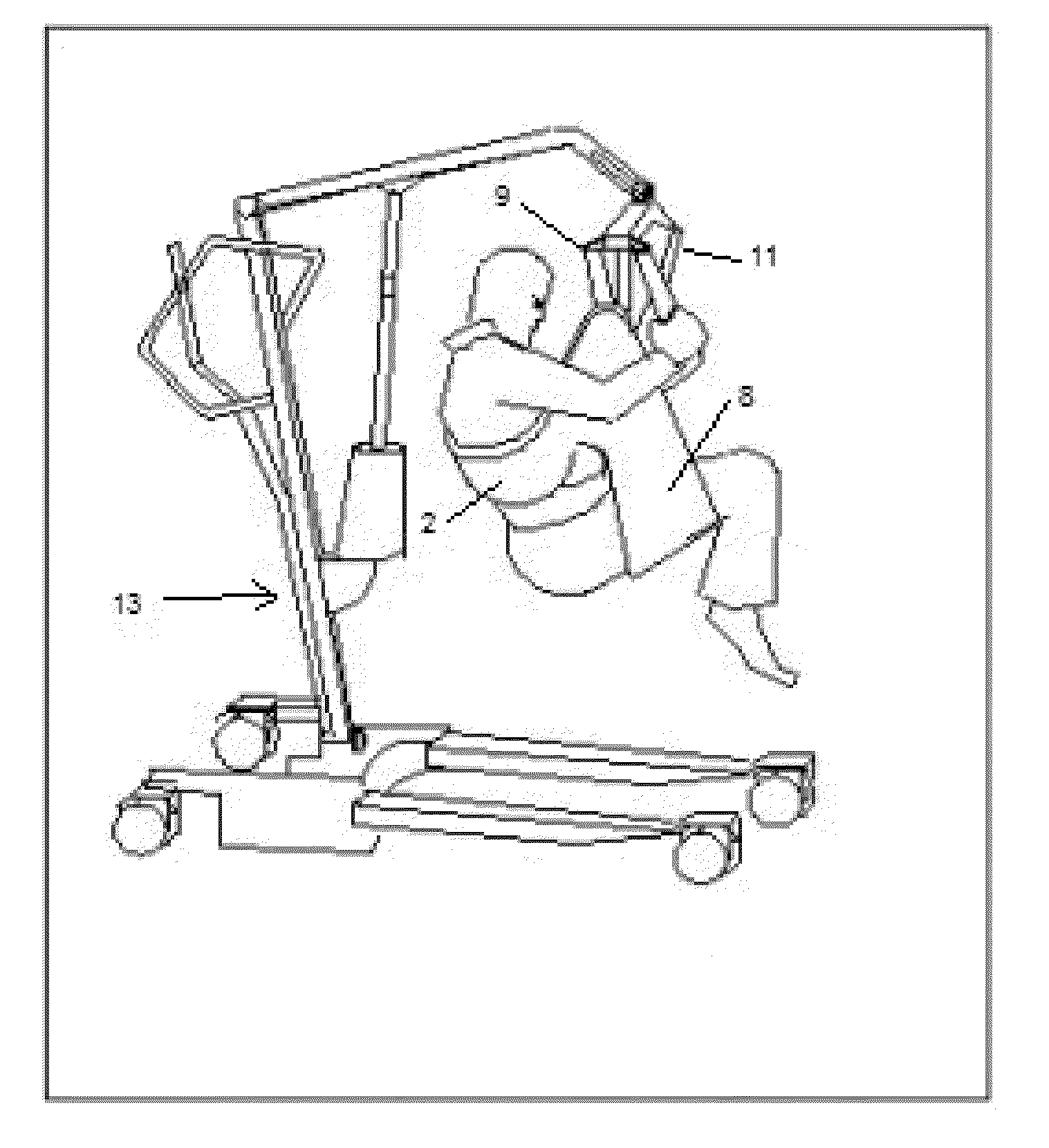Invalid toileting safety sling
a technology for toileting and safety slings, applied in medical science, ambulance services, nursing beds, etc., can solve the problems of less support the sling provides, and increasing the tendency of patients to slide through the sling, so as to achieve convenient configuration
- Summary
- Abstract
- Description
- Claims
- Application Information
AI Technical Summary
Benefits of technology
Problems solved by technology
Method used
Image
Examples
Embodiment Construction
—FIG. 5
[0054]FIG. 5 shows a plan view of the preferred embodiment of the invention. The proposed toileting sling 1 is a substantially U-shaped fabric comprising a central span 2 that serves as a back support section and substantially vertical fabric 8 extending from either side of the central span and substantially perpendicularly to the central span that serve as thigh support sections . In the preferred embodiment, the fabric is a flexible nylon. However the fabric can consist of any other flexible material or open-weave mesh material. The toileting sling 1 also incorporates a flap 3 of fabric, which extends down from the base of the back-support horizontal span 2 of the sling. A strap 4 is sewn along the bottom edge 10 of the flap 3. Each end of the strap 4 passes through a ring 5 sewn onto the side of the sling, and then through adjustment buckles 6 at the top of the sling 1. In the preferred embodiment the adjustment buckles 6 are attached at a support point located near the to...
PUM
 Login to View More
Login to View More Abstract
Description
Claims
Application Information
 Login to View More
Login to View More - R&D
- Intellectual Property
- Life Sciences
- Materials
- Tech Scout
- Unparalleled Data Quality
- Higher Quality Content
- 60% Fewer Hallucinations
Browse by: Latest US Patents, China's latest patents, Technical Efficacy Thesaurus, Application Domain, Technology Topic, Popular Technical Reports.
© 2025 PatSnap. All rights reserved.Legal|Privacy policy|Modern Slavery Act Transparency Statement|Sitemap|About US| Contact US: help@patsnap.com



